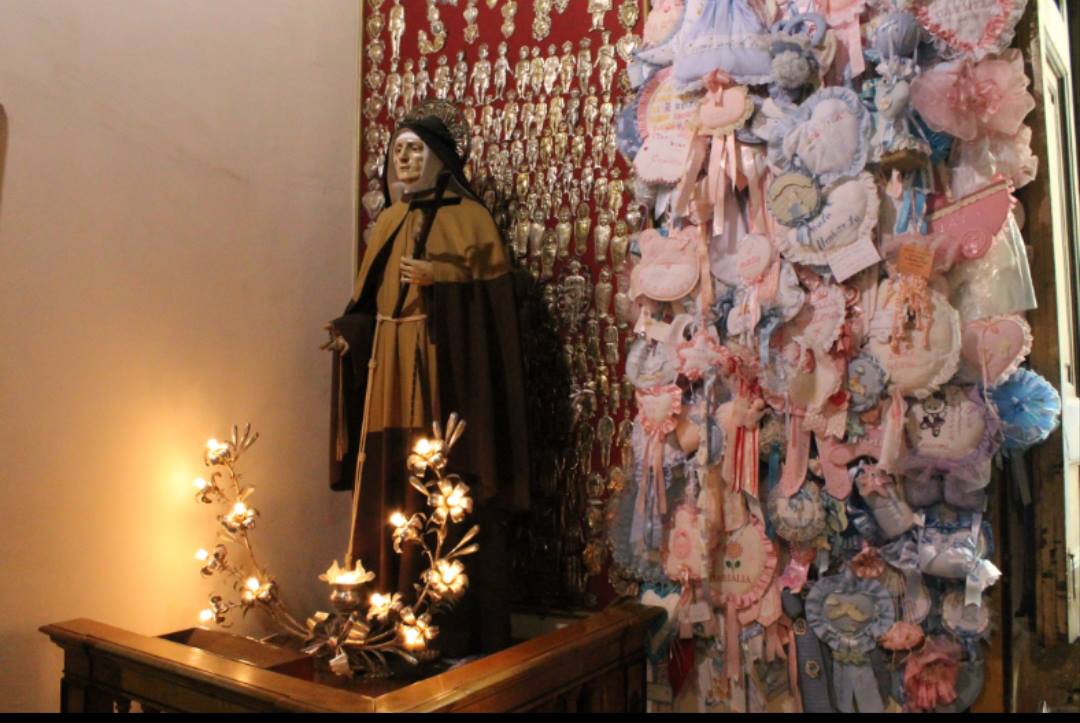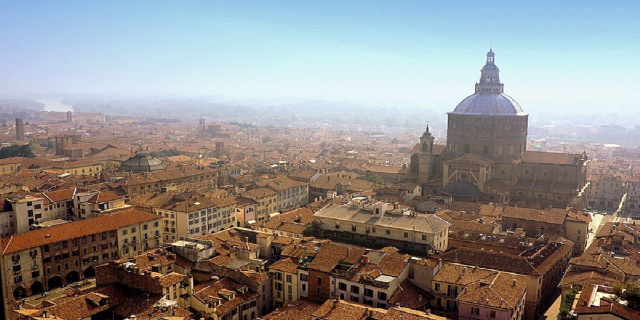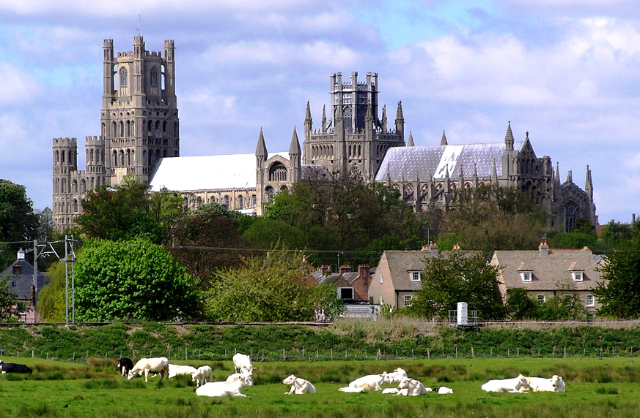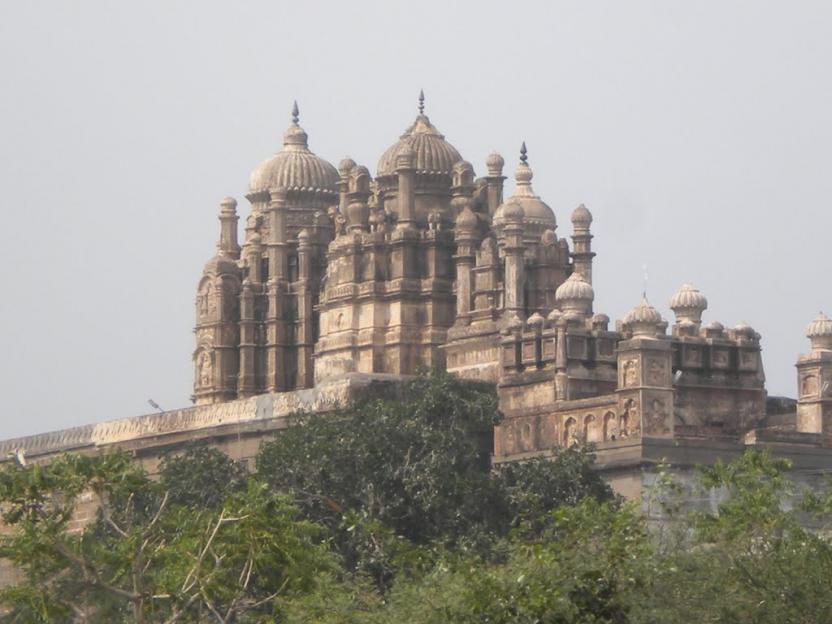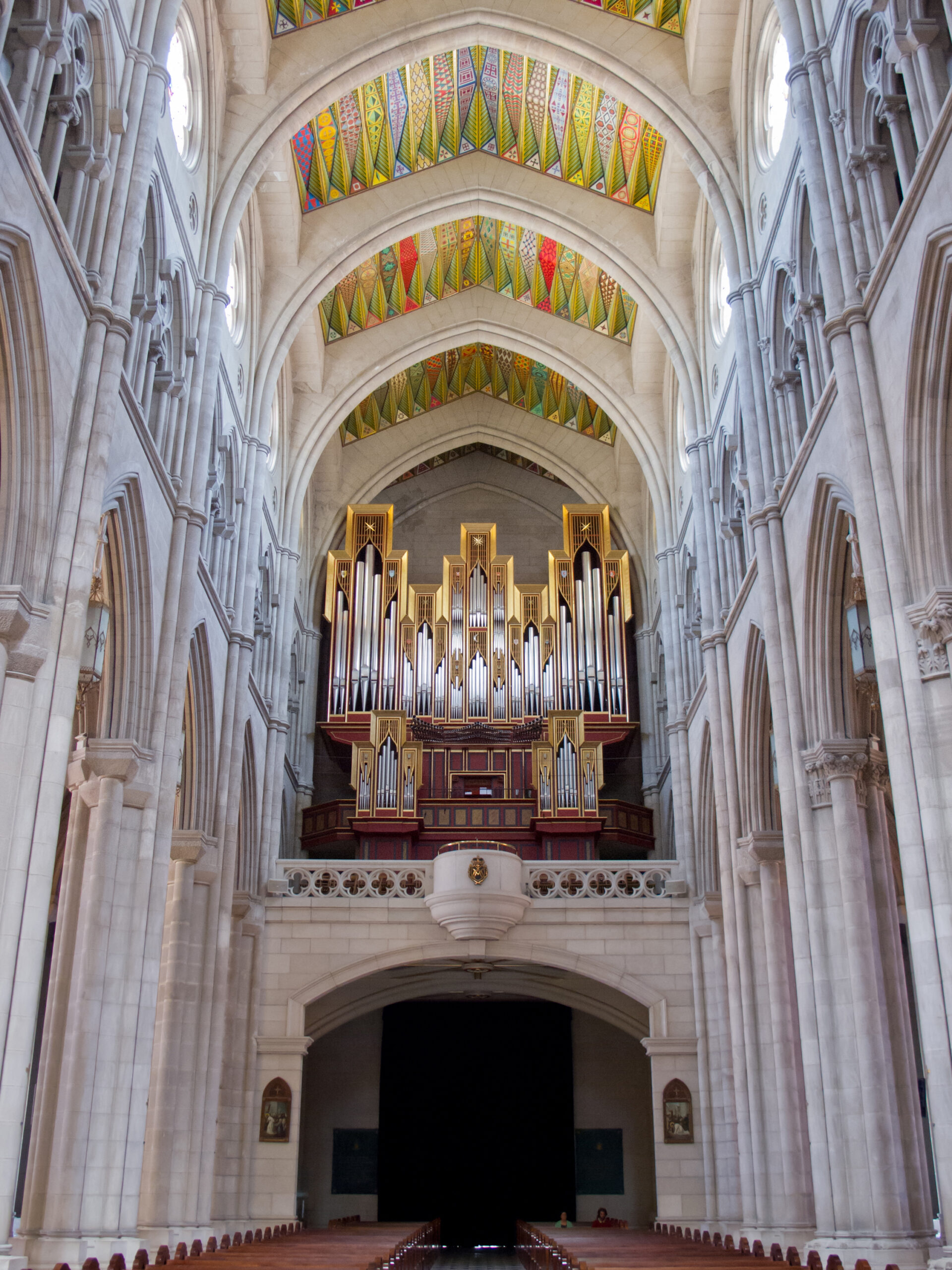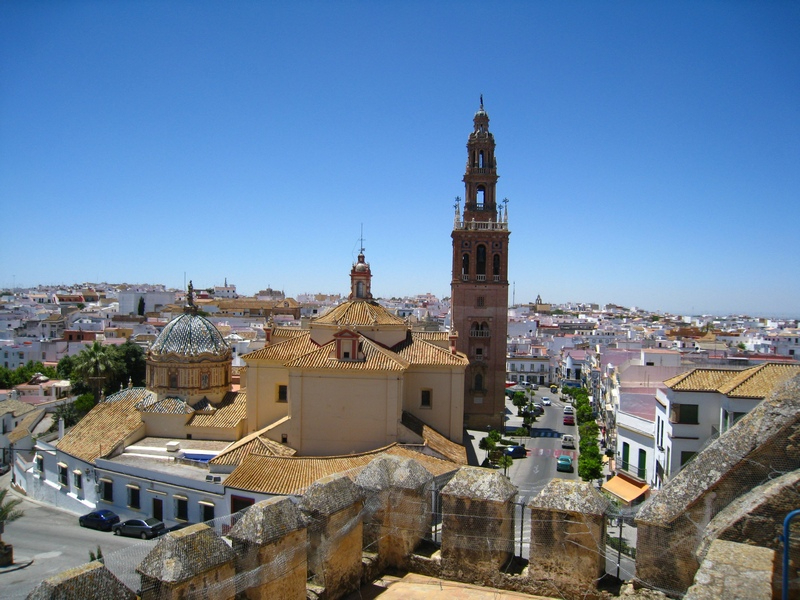At the beginning of Quartieri Spagnoli, in "Vico Tre Re a Toledo" there is a church, at the corner with Via Speranzella: it is the Church of S. Maria Francesca (who lived in Naples in the 18th century), built in the 19th century as part of an older building, which has centuries of history. It was built in execution of a decree of Ferdinand II of Bourbon and completed in 1861, as indicated in a commemorative epigraph set in the wall of the entrance hall.
The main entrance leads to a small, square-shaped nave, reserved for the faithful, at the end of which there is the altar, dominated by the statue of the Saint, dressed in the characteristic Franciscan habit. On the left wall there is a sculpture of the Madonna Pastora, a cult linked to the life and work of spiritual reform of St. Francis.
From the secondary entrance, flanking the main one, one enters two side chapels, communicating with each other; in the first one the statue of a Madonnina dominates, placed in a corner, in an artificial cave entirely built with stones coming from the Lourdes cave, to symbolize the ideal and religious link between the two places of worship.
In the chapel next door is the tomb of the Saint, a constant destination for the faithful. A small and simple sacristy completes the worship space on the ground floor to the side of the first side chapel. The atmosphere is that of a fervent and genuinely popular religiousness; the faithful – mostly women – recite the Rosary expressing, in the tonality and rhythmicity of the prayer, a sincere feeling of faith.
The side chapel leads to the stairs and then to the Saint’s house. The attention of the visitor is immediately struck by the hundreds and hundreds of votive offerings, of pink and blue ribbons that adorn the wall of the first room of the house, often accompanied by sweet and lively photos of babies; they are the signs of gratitude of the women devoted to the Saint for having received the "miracle" of fertility, a divine miracle of which the Saint is the mediator, since she intercedes with God, according to Catholic doctrine.
You then enter another room, where the attention is captured by the "Chair", the famous chair where women sit to pray and receive the blessing of a nun of St. Frances, after being touched in the head, face and heart with a crucifix from the Baroque ornamentation.
